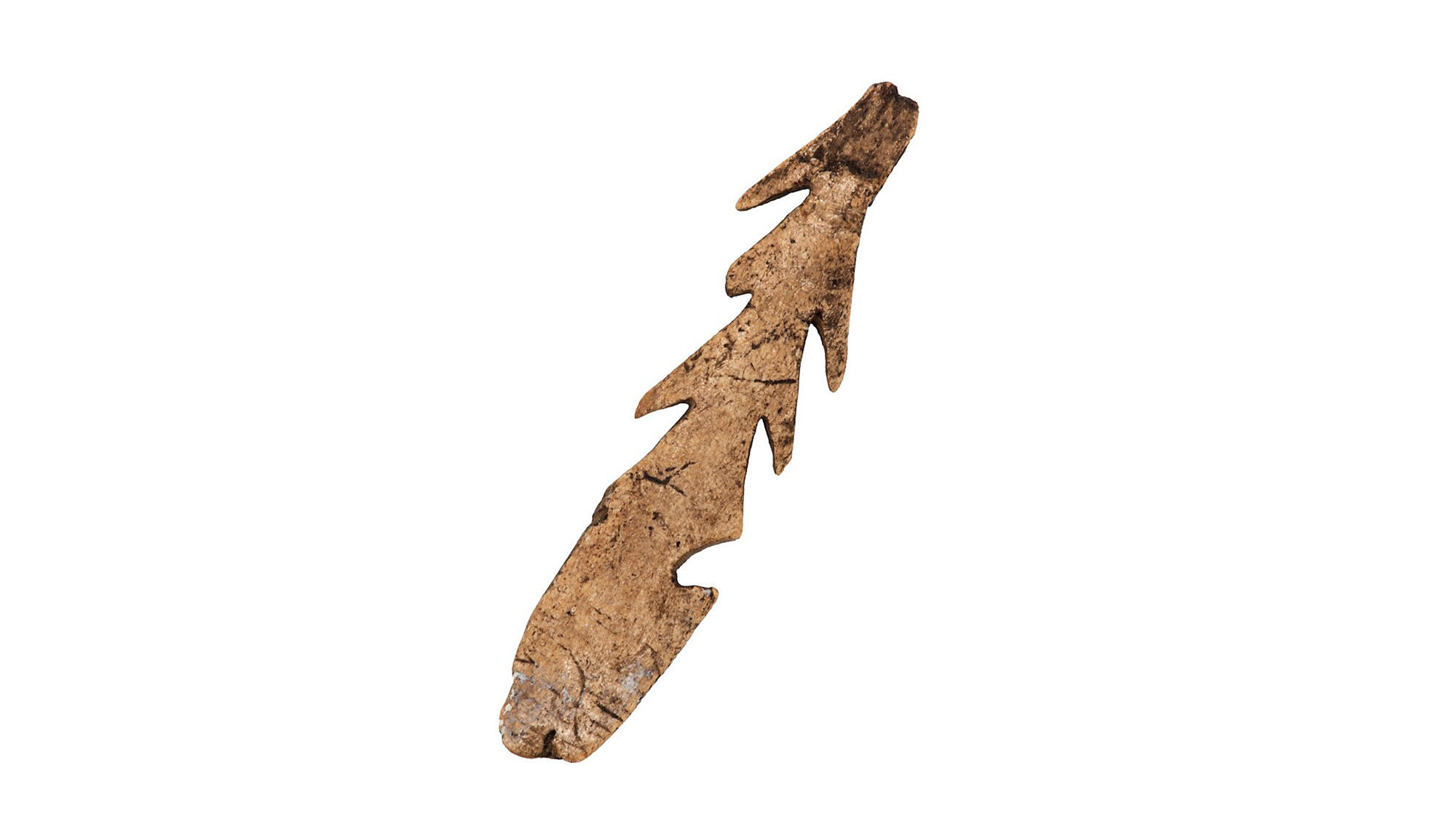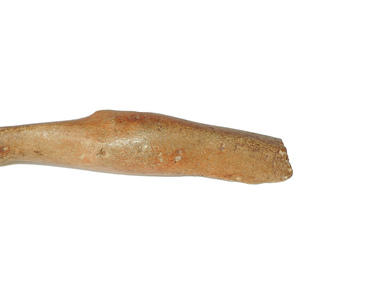A harpoon is a tool used to extract fish or animals that live in the water. It was used all year round: both in winter and in summer. Usually, such objects were made out of bones or horns.
A bone harpoon with barbs from the collection of the Museum of Local History was found on Verkholenskaya Mountain during excavations led by Swiss-born archaeologist and ethnographer Bernhard Petri. In 1918, he moved to Irkutsk to teach at the university and explore the culture of the early Neolithic inhabitants of Eastern Siberia.
Of all the fishing equipment that has survived to this day, bone harpoon heads are the oldest finds. They appeared in the Mesolithic period, 12-7 thousand years ago, although archaeologists attribute some of the objects to an earlier time. Harpoons continued to be used, along with a later invention — hooks to catch fish. People mastered new materials and techniques, but the shape of the tool changed insignificantly.
The peoples of the coastal regions of Northern Siberia hunted the sea beast with the help of simple rotary bone harpoons. This tool had a sharp, jagged end and a soft leash in the form of a cord or rope. When hunting, the harpoon got stuck in the animal’s body, and the leash kept it afloat. Ancient hunters probably threw others weapons and jabbed the fish with them at a short distance, without letting the shaft out of their hands.
Researchers express different points of view as to how harpoons were made and used. According to one version, a flat, jagged head was first made, then it was inserted into the shaft, and a hole was made in the base of the shaft to secure the leash. A head of a simpler shape would often pop out of the body of the prey, and ancient people learned to make side barbs, like the one from the museum collection’s exhibit.
Later, larger harpoons were used to catch whales, sharks and dolphins. The Aleuts, Eskimos and Chukchi made spears from bronze, iron, silicon and native copper. And the peoples of Alaska sometimes used solid wooden harpoons. In the caves of Europe, scientists have found bone tips from complex harpoons, with which ancient people probably caught large fish and hunted forest animals.
A bone harpoon with barbs from the collection of the Museum of Local History was found on Verkholenskaya Mountain during excavations led by Swiss-born archaeologist and ethnographer Bernhard Petri. In 1918, he moved to Irkutsk to teach at the university and explore the culture of the early Neolithic inhabitants of Eastern Siberia.
Of all the fishing equipment that has survived to this day, bone harpoon heads are the oldest finds. They appeared in the Mesolithic period, 12-7 thousand years ago, although archaeologists attribute some of the objects to an earlier time. Harpoons continued to be used, along with a later invention — hooks to catch fish. People mastered new materials and techniques, but the shape of the tool changed insignificantly.
The peoples of the coastal regions of Northern Siberia hunted the sea beast with the help of simple rotary bone harpoons. This tool had a sharp, jagged end and a soft leash in the form of a cord or rope. When hunting, the harpoon got stuck in the animal’s body, and the leash kept it afloat. Ancient hunters probably threw others weapons and jabbed the fish with them at a short distance, without letting the shaft out of their hands.
Researchers express different points of view as to how harpoons were made and used. According to one version, a flat, jagged head was first made, then it was inserted into the shaft, and a hole was made in the base of the shaft to secure the leash. A head of a simpler shape would often pop out of the body of the prey, and ancient people learned to make side barbs, like the one from the museum collection’s exhibit.
Later, larger harpoons were used to catch whales, sharks and dolphins. The Aleuts, Eskimos and Chukchi made spears from bronze, iron, silicon and native copper. And the peoples of Alaska sometimes used solid wooden harpoons. In the caves of Europe, scientists have found bone tips from complex harpoons, with which ancient people probably caught large fish and hunted forest animals.



